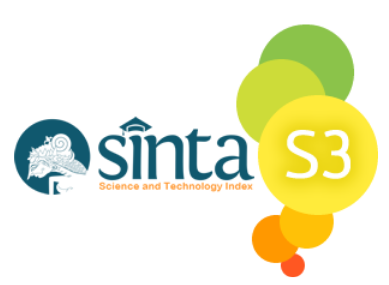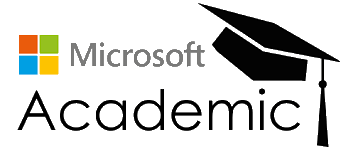THE EFFECT OF KNOWLEDGE NETWORK, KNOWLEDGE INTEGRATION AND RELATIONAL CAPITAL ON INNOVATION CAPABILITY
Abstract
This study aims to determine and analyze the effect of intellectual capital on innovation capability. This study uses a quantitative approach. The independent variables are knowledge network, knowledge integration and relational capital. The dependent variable is the company's innovative capabilities. In this study using a questionnaire with 17 questions. This study had 32 respondents from different startup companies in Indonesia. Analysis of the data used in the form of validity and reliability statistics, classical assumption tests, and multiple linear regression analysis. The results of the study show knowledge network has a significant effect on knowledge integration. Knowledge integration and relational capital also have a significant effect on innovation capability.
Full Text:
PDFReferences
Banerji, Devika&Torsten Reimer. 2018. Startup founders and their LinkedIn connections: Are well-connected entrepreneurs more successful?.Computers in Human Behavior, Vol. 90, pp. 46–52.
Berga, Vebjørn et al. 2018. Software startup engineering: A systematic mapping study. The Journal of Systems & Software, Vol. 144, pp. 255–274.
Caseiroa,Nuno&Arnaldo Coelho. 2017. The influence of Business Intelligence capacity, network learning and innovativeness on startups performance.Journal of Innovation & Knowledge.
Gansiniec, Regina Lenart. 2016. Relational capital and open innovation – in search of interdependencies.Procedia - Social and Behavioral Sciences, vol. 220, pp. 236-242.
LimSangmin, Ohsung Kwon, andDukHee Lee. 2018. Technology convergence in the Internet of Things (IoT) startup ecosystem: A network analysis. Telematics and Informatics, vol. 35, pp. 1887–1899.
Lin, Min &Jun Wei. 2018. The impact of innovation intermediary on knowledge transfer.PhysicaA, vol. 502, pp. 21–28.
Naqshbandi, M. Muzamil&Sajjad M. Jasimuddin. 2018. Knowledge-oriented leadership and open innovation: Role of knowledge management capability in France-based multinationals.International Business Review, vol. 27, pp. 701–713.
Nirwana Michael Dwianto&WawanDhewanto. 2015. Barriers in Implementing the Lean Startup Methodology in Indonesia – Case Study of B2B Startup.
Procedia - Social and Behavioral Sciences, Vol. 169, pp. 23-30.
Picken, Joseph C. 2017. From startup to scalable enterprise: Laying the foundation. Business Horizons, Vol. 60, pp. 587–595.
Sulistyo, Heru &Siyamtinah. 2016.Innovation capability of SMEs through entrepreneurship, marketing capability, relational capital and empowerment.Asia Pacific Management Review, Vol. 21, pp. 196-203.
Wang, Ming-Chao, Pei-Chen Chen, and Shih-Chieh Fang. 2018. A critical view of knowledge networks and innovation performance: The mediation role of firms' knowledge integration capability. Journal of Business Research,Vol. 88, pp. 222-233.
Sugiyono. 2014. MetodePenelitianPendidikanPendekatanKuantitatif, Kualitatif Dan R&D. Bandung: Alfabeta.
Siregar, S. 2013. MetodePenelitianKuantitatif. Jakarta: PT FajarInterpratamaMandiri
Edvinsson, L., Malone, M. S. 2010. Poznajprawdziwąwartośćswojegoprzedsiębiorstwaodnajdującjegoukrytekorzenie. Warsaw: PWN.
Ford, D., Gadde, L.E., Håkansson, H., Lundgren, A., Snehota, I., Turnbull, P., Wilson, D. (Eds.) 1998. Managing Business Relationships. UK: John Wiley & Sons.
Kale, P., Singh, H., Perlmutter, H. 2000. Learning and protection of proprietary assets in strategic alliances: building relational capital. Strategic Management Journal, 21(3), pp. 217-237.
Uzzi, B., Lancaster, R. 2003. Relational Embeddedness and Learning: The Case of Bank Loan Managers and Their Clients, Management Science, 49(4), pp. 383-399.
Heide, J. B., John, G. 1992. Do Norms Matter in Marketing Relationships?.Journal of Marketing, 56(2), pp. 32-44.
Macneil, Ian R. 1981. Economic Analysis of Contractual Relations: Its Shortfalls and the Need for a “Rich” Classificatory Apparatus. Northwestern University Law Review, 75(6).
Roberts, E. B. 2001. Benchmarking Global Strategic Management of Technology. Survey of the word's largest r&d performers reveals, among other trends, a greater reliance upon external sources of technology, Research Technology Management, 44(2), pp. 25-36.
Chesbrough, H. W. 2006. Open Business Models: How to Thrive in the New Innovation Landscape. Boston, MA: Harvard Business School Press.
Dong, J. Q., & Yang, C.-H. 2016. Being central is a double-edged sword: Knowledge network centrality and new product development in U.S. pharmaceutical industry. Technological Forecasting and Social Change, Vol. 113, 379–385.
Zahra, S. A., van de Velde, E., &Larraneta, B. 2007.Knowledge conversion capability and the performance of corporate and university spin-offs. Industrial and Corporate Change, 16(4), 569–608.
Sekaran, Uma. 2003. Research Methods for Business : a Skill-Building Approach.John Wiley & Sons.
DOI: https://doi.org/10.18551/erudio.7-1.7
Refbacks
- There are currently no refbacks.
Copyright (c) 2020 Erudio Journal of Educational Innovation

This work is licensed under a Creative Commons Attribution 4.0 International License.












